Barcelona are in the process of a total rebuild. With major stars of the La Liga giant gone, including the legend of the club Lionel Messi who moved to Paris Saint-Germain, the time has come to go back to the roots. For the Catalans, that means putting their trust into the fabled academy, La Masia.
One young talent who’s yet to get a full taste of senior play is Jandro Orellana, a 21-year-old midfielder aching for a chance to prove himself. Even though Barcelona have no shortage of midfielders, could he be the one to bring something the others are lacking?
This tactical analysis will be a scout report on Jandro, highlighting his strengths and weaknesses. Our analysis will aim to find out whether he has what it takes to make a big step-up soon and whether he’d suit Barcelona’s tactics.
Player overview
Jandro Orellana is a hybrid of a true defensive midfielder/ball-winner and a deep-lying playmaker. Standing at 5ft 8in (178cm) and weighing 63kg, he is not a big physical presence but makes up for it with tactical and positional IQ. The 21-year-old prefers to pass with his right foot and is a player who excels in tight spaces and creating from deep spaces.
Below is his player profile, as visualised by data used for his 2020/21 season in Segunda B.
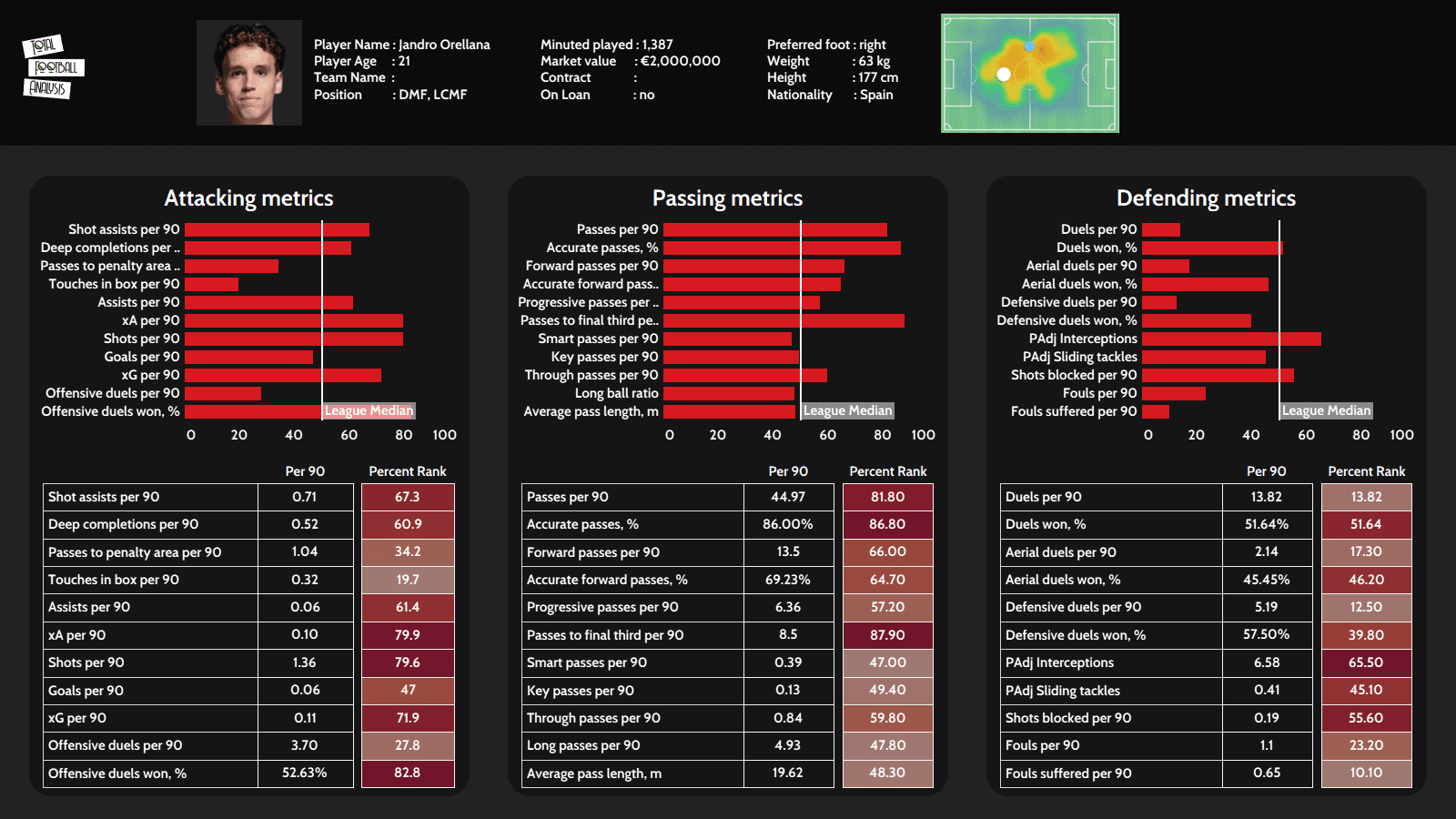
Immediately, we can see his deep-lying capabilities as Jandro has a wide repertoire of passes in his arsenal, ranging from short combinations to long-ball chance creation. Often playing in the role of a pivot, he is the ball recycler and the one tasked with breaking the opposition’s press.
However, his attacking and defensive sides should not be ignored. Even though he doesn’t win as many direct duels, Jandro uses his positional awareness to stop attacks and start Barcelona’s transitions. For a player who often occupies deep areas of the pitch, he is quite involved higher up too, registering goals and assists when the opportunity arises.
Other than that, Jandro is a set-piece specialist so would be able to give the first team a different outlet in attack.
Positioning & movement
On paper, Orellana is a pivot who mainly operates in the deep areas of the pitch. However, he also has experience playing in more advanced roles and even making late runs into the box and creating in the final third. All of this has improved his positional awareness as well as his understanding of space and how to exploit it.
Looking at his heatmap below, we can see that he still prefers the deeper areas of the pitch but often ventures up. What it also tells us is that he can be deployed as the left-sided central midfielder and his skill set complements it well.
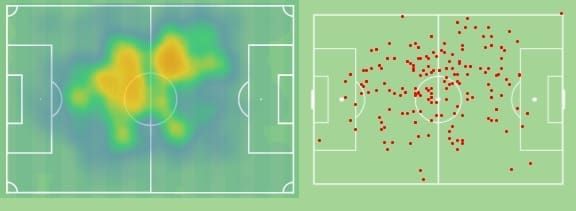
As opposed to traditional Barcelona pivots, he also has a big presence in and around the opposition’s box where he takes shots or creates for his teammates. But his main areas of operation remain in deeper roles. That being said, however, he is versatile enough to perform multiple roles in the first phase of play.
Most often, we’ll see him either in-between the centre-backs in the lavolpiana role, acting as the third centre-back to either side of the tandem or positioning himself just ahead of the backline, providing the team with a between the lines presence.
Jandro is the hub of the team, meaning that he is used to connect thirds, reset attacks and find better angles to progress the ball. Below we can see him in one of his usual roles – between the centre-backs and at the centre of his team’s network.
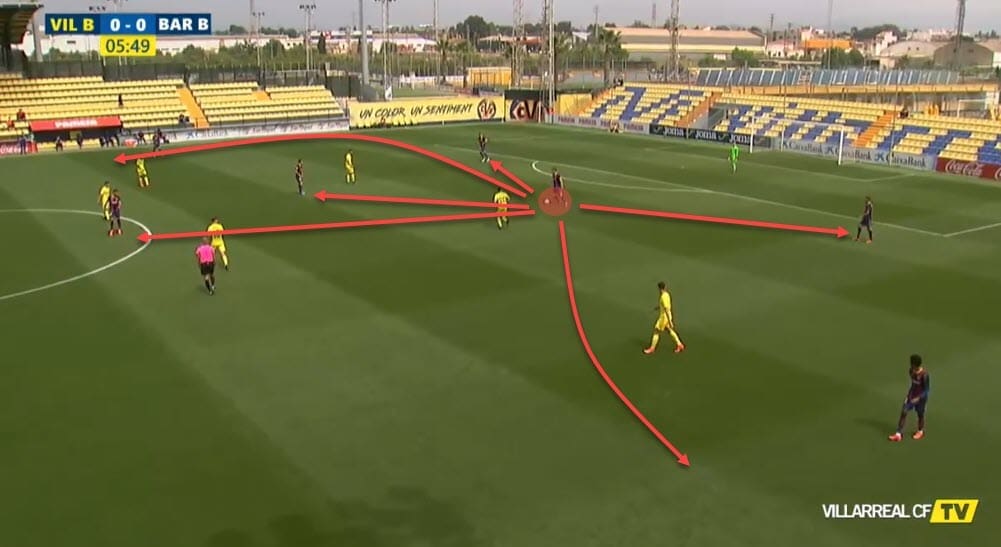
From there, he has the vision and the range to advance play in any way he likes. We’ll explore his passing further down the line of this tactical analysis but with his range and technical quality, Jandro has a solution for almost any situation.
But the most important thing about his movement is the fact that he knows what space to occupy, vacate or exploit. This is closely connected to having experience of playing across the midfield line as it gives him different perspectives of what the team needs in each phase of attack. Even though we’ll mostly see him occupy deeper areas, Jandro can and will advance high up the pitch to playmake.
He knows how and when to move to create passing channels for his teammates, as can be seen from the example below.
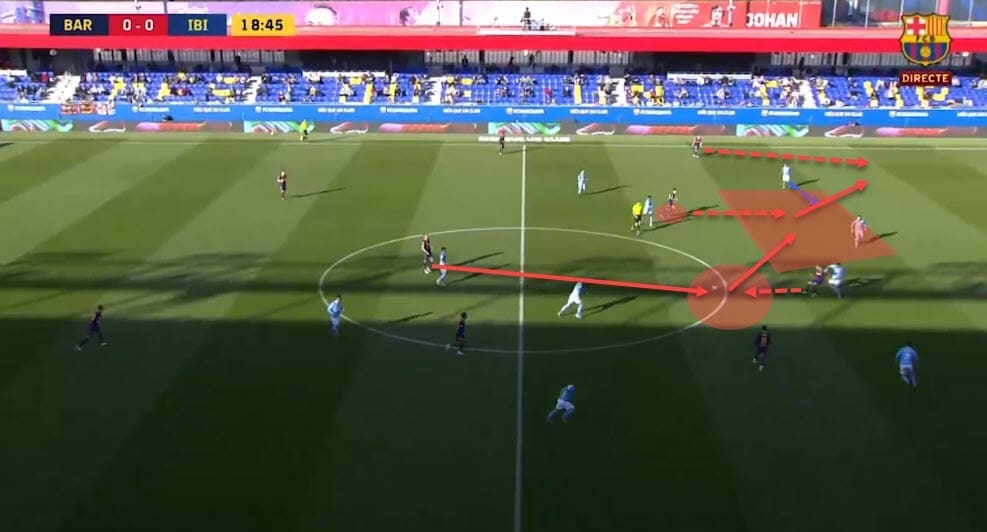
Here, he pushes forward and beyond his marker and then receives the lay-off from one of his teammates. Once that high up the pitch, Jandro can combine with the wide players to create goal-scoring situations in danger areas.
But this movement and positional awareness is a tool that can be used in both offensive and defensive scenarios. Since he is always aware of his surroundings, Orellana is also a very good defender despite not having the frame for it. Instead of relying on physical attributes, he reads the game well and then acts on it.
In the following example, you can see him scan his surroundings, identify the threat and quickly move to intercept the ball even before the pass from the opposition is made.
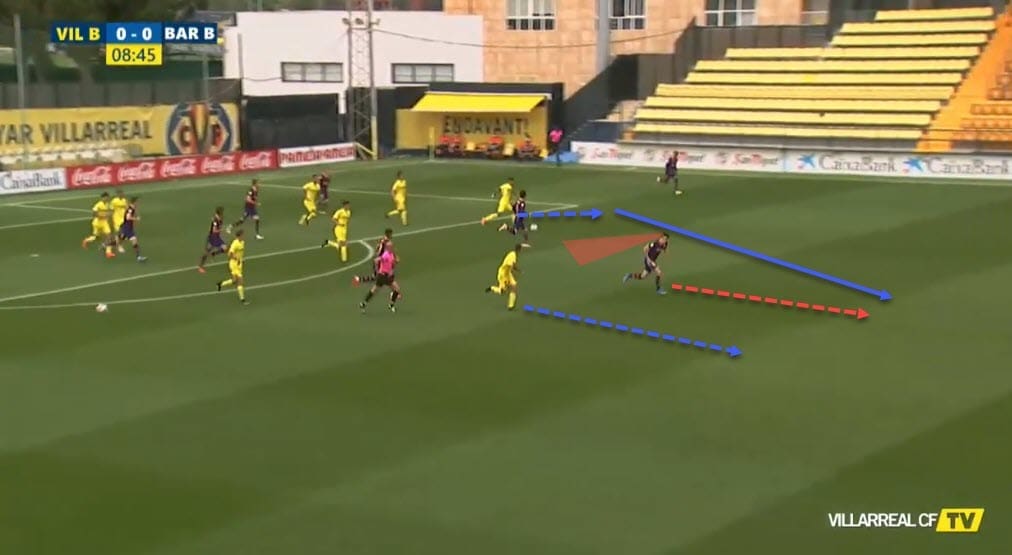
Being defensively capable is very important for a Barcelona pivot but the same as Sergio Busquets was never a physical specimen, neither is Jandro. And it doesn’t matter that much because they don’t rely on those attributes to be successful. Orellana has been improving his 1v1 game too but this is still a part of his player profile that needs to grow.
He tends to rush into challenges with his full body, which means players with good ball control and a low centre of gravity can easily bypass him. One positive in this whole scenario is his recovery pace, which is greater than that of Busquets of someone like Nico González, despite the latter’s physical superiority when it comes to defensive duels.
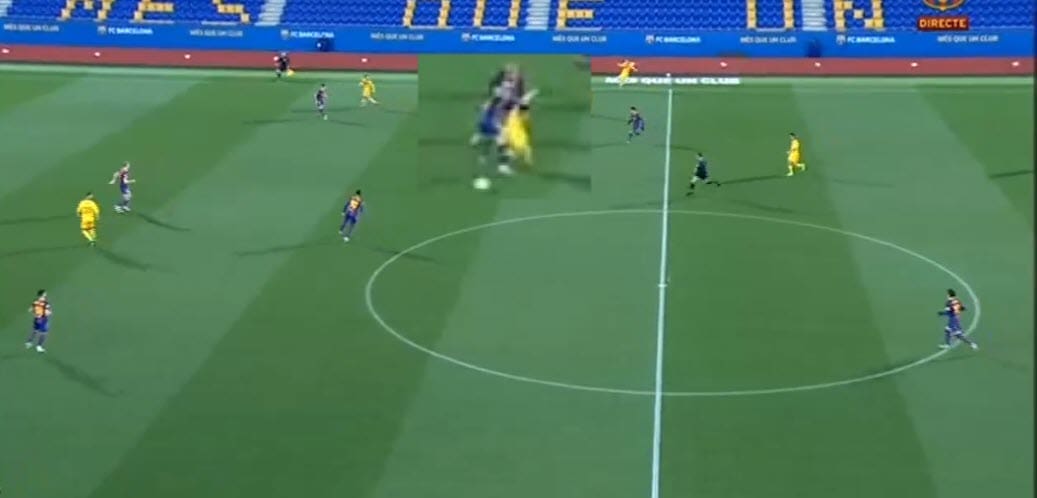
In the image above, we can see him rush into a late challenge, fouling the opponent instead of getting the ball. Often, if the opposition have skilled players, this can result in Jandro getting bypassed easily and as the team’s last line of defence ahead of the backline, that can be dangerous play.
On the ball capabilities
One of the absolute essential skills a Barcelona pivot must have is excellent passing abilities. That goes for all their players but midfielders in particular must be skilled on the ball. Jandro is incredible in this aspect. His vision and range are fantastic and offer him a wide range of different solutions for every problem the team encounters in the build-up phase.
Below are his pass maps from some of the latest games he’s played with Barcelona B. Apart from seeing a lot of passes coming from the deep, we can see that Jandro tends to be very progressive on the ball, advancing play up the pitch and beating the press or breaking the defensive block.
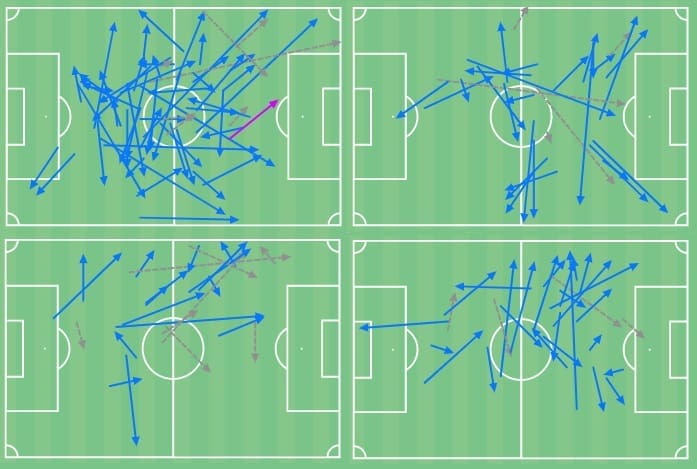
And while we won’t see that many key passes, there are also almost no misplaced passes either. But the most important thing about Jandro is that he is proficient in both long and short passes as well as breaking the lines consistently. Let’s explore some of those tendencies on the ball.
Without a doubt, this is also a part of his arsenal that benefits greatly from spatial awareness. Jandro recognises the space that needs to be exploited and has the vision and range to execute the pass. It is essential that a Barcelona pivot can break lines and send through balls that connect thirds and slice the opposition’s block.
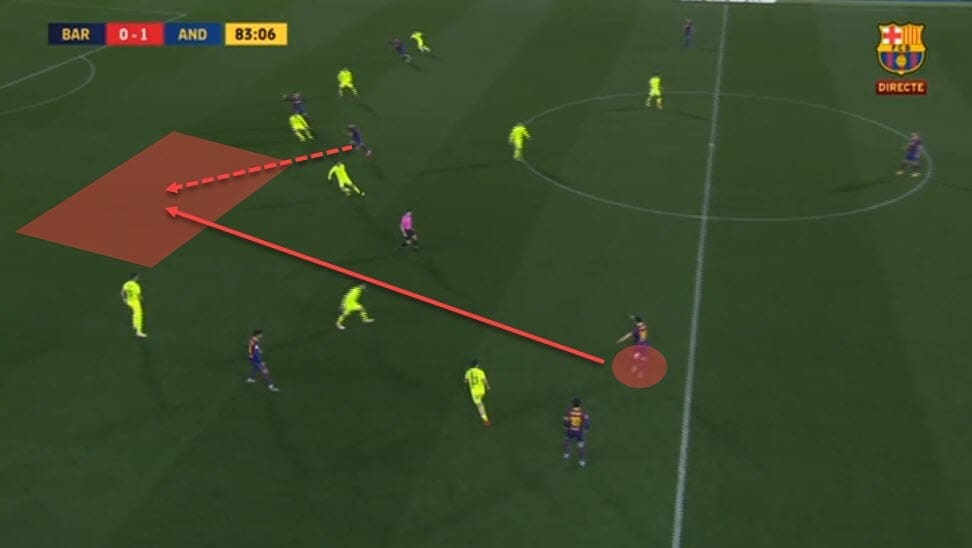
In the example above, Jandro sees the play happening and understands his teammate’s move even before it transpires. Next, he has the vision and the range to play the pass that sets up the attack perfectly. This particular ball cuts through all three of the opposition’s lines and puts Barcelona B in an excellent position to threaten the goal.
And Orellana is well-equipped to deploy such passes from a wide range of different positions. We’ve mentioned how his positioning can vary and that he moves around the pitch according to the team’s needs.
In our next example, we see the 21-year-old move up the pitch with the ball at his feet and then connect thirds once more as he sends a brilliant line-breaking pass yet again.
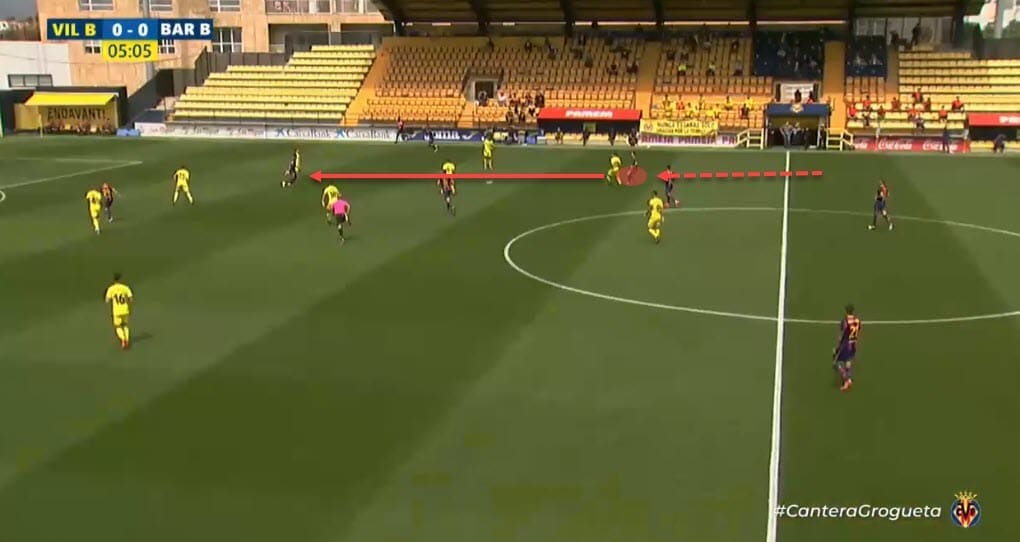
This also shows us his ability to carry the ball from the deep. It has to be said, however, that Jandro can get carried away by his runs, sometimes trying too much and ending up losing himself and the ball in those mazy runs. But overall, it’s still a trait worth highlighting.
One other signature move in his arsenal are long diagonal balls that switch sides. Jandro is excellent at recycling play and finding new angles to exploit the opposition’s block. Often, he will do that through long passes from the deep.
Below we can see a fairly usual sequence that involves skill, vision and understanding of movement and space. Orellana sees his teammates have vacated the left flank and have successfully dragged their markers away.
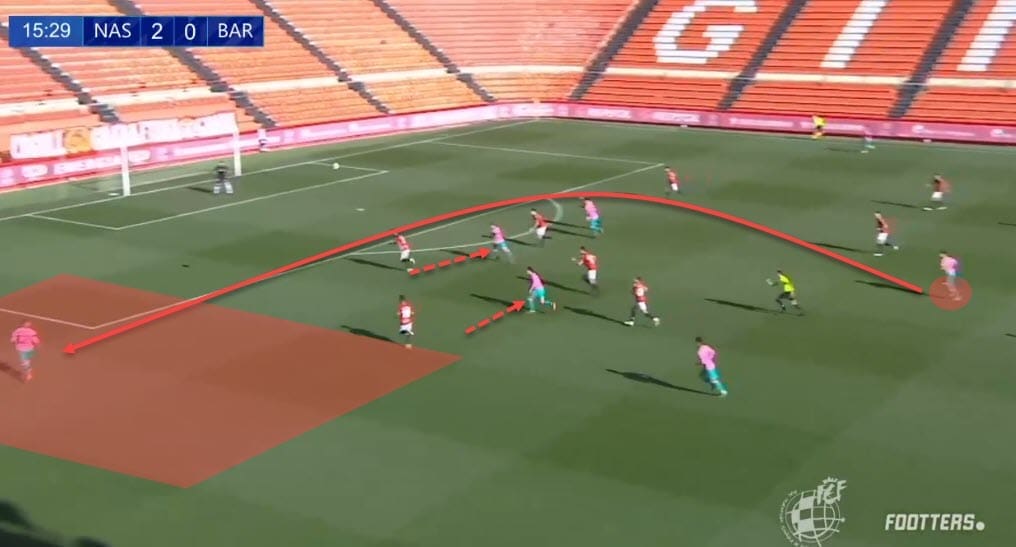
At the same time, this has created space for another player to exploit, should the ball be switched over quickly and accurately. Fortunately, Jandro can do exactly that and does it on a very regular basis.
These passes look simple on the surface but since it all happens within seconds, it takes a skilled and smart footballer to both recognise and execute the play so quickly.
Close control & scanning
The final aspect of Jandro Orellana’s player profile we’ll analyse in this scout report is his close control and subsequently, scanning. We’ve talked a lot about scanning already but that’s only because it’s a crucial part of a player’s kit. The way Jandro combines scanning with his close ball control though is what sets him apart from others.
We’ll explore it through a couple of great sequences. The first one below shows us Jandro deep in Barcelona’s half while the opposition is trying to collapse. Before the ball reaches him, the young midfielder scans for a possible solution and awaits the pass to his feet.
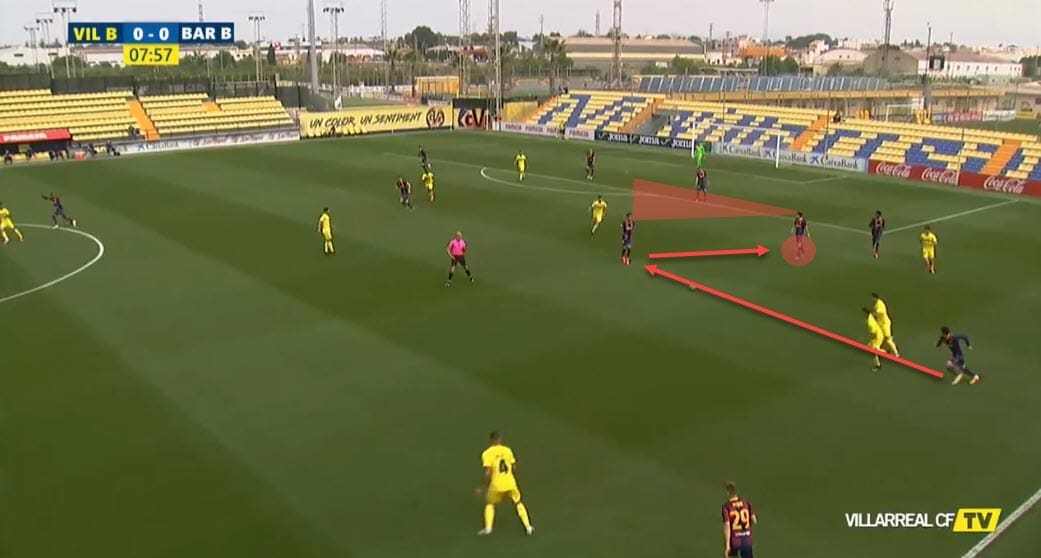
This is crucial as he already knows the direction in which he’ll move and where has to put the ball to escape the opposition’s press. Once the ball reaches him, we have to analyse the way he controls it as that’s another interesting point about his player profile.
Generally, Jandro is very swift and effective in possession, moving the ball rapidly and playing one-touch football whenever possible. In these situations, however, he advances play in just two simple touches – the first one always directs his movement, enabling him to open his body towards the target.
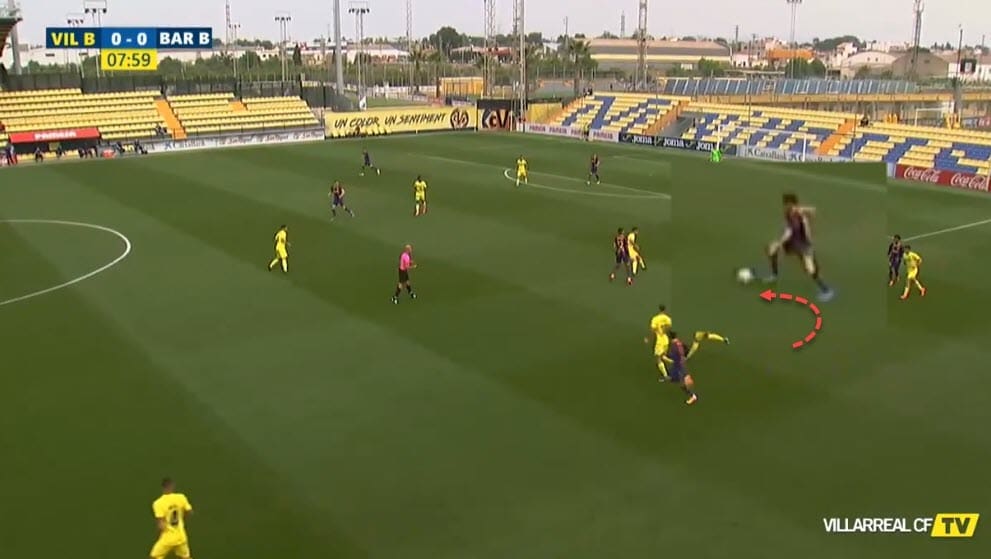
Notice how he lets the ball slide over his body and towards the direction both he and the pass want to go. Then, the second touch deploys the accurate pass and reaches its destination.
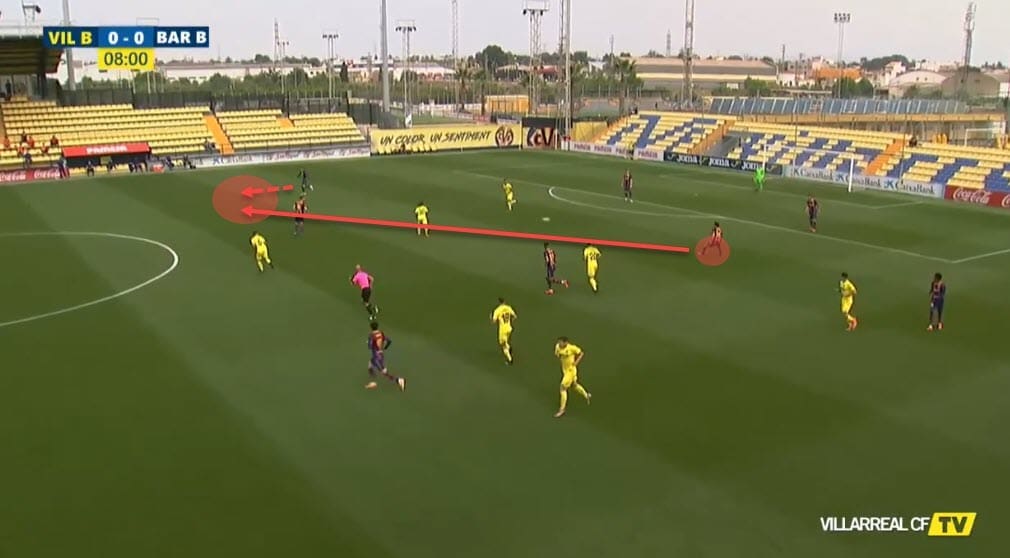
Let’s look at a very similar sequence, only higher up the pitch. Once again, Jandro will first scan his surrounding to see where both his opponents and teammates are positioned. With that done, he now knows how to position his body so that the next move he makes takes him into open space.
He noticed a teammate advancing up the right flank and a marker just behind him.
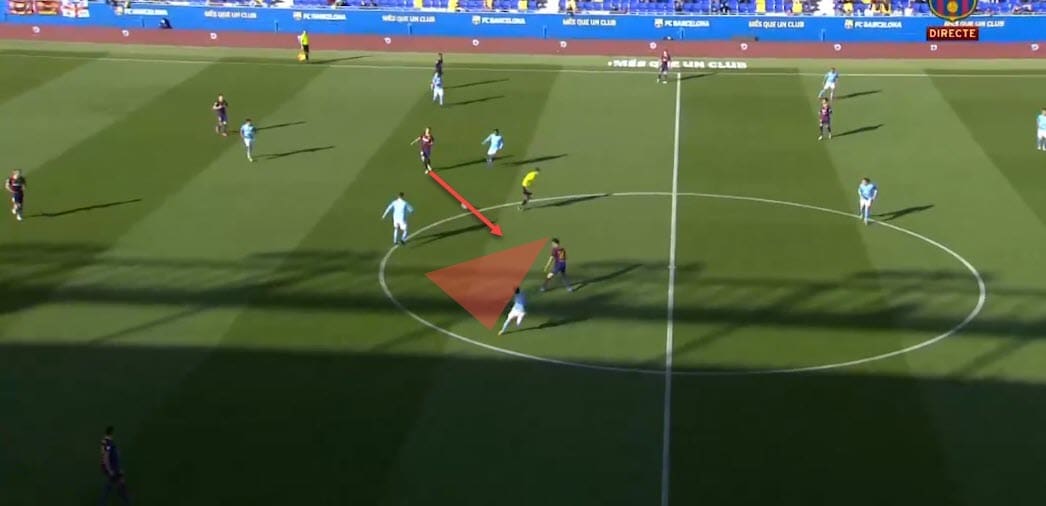
Once the ball reaches him we see the same sequence unfold once more. The first touch directs his movement and his body both shields the ball and lets it slide across it so that it goes towards his next destination. With newfound space created, Jandro can advance a few steps forward before combining with the same teammate he saw moments ago when he scanned the surroundings.
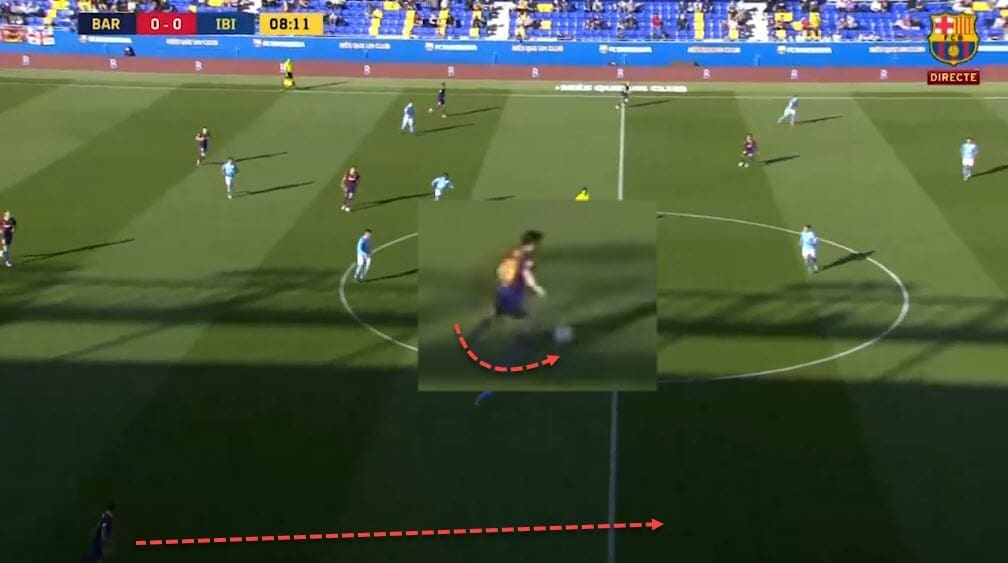
But this is also where we have to mention that there is room for improvement here too. While generally his close control, decision-making and technical abilities are on an extremely high level, Jandro sometimes holds onto the ball for too long.
This can be dangerous since the opposition can collapse and recover possession from him, which puts Barcelona at a great disadvantage given that he’s usually deep on the pitch. We can see an example of this down below.
Orellana has a clear passing option that would eliminate two opposition markers and advance play easily. However, he opts to take his touch towards his half and risks being collapsed upon.
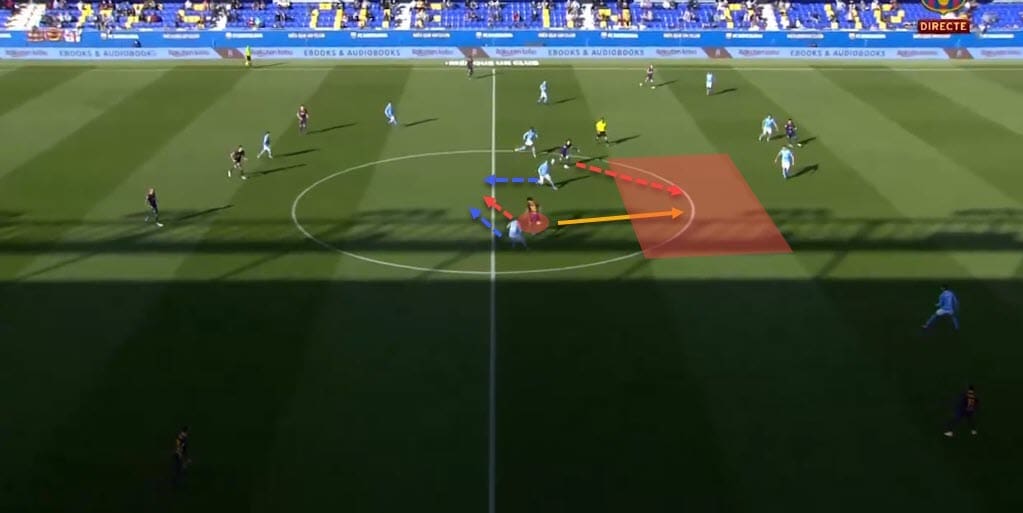
This results in the opposition recovering possession and starting a counter-attack that could’ve ended in a dangerous situation for the Catalans. Luckily, they manage to plug the holes and prevent that from happening.
Final remarks
Jandro Orellana is a talent that should be given a chance to shine in the first team. Even though others like Nico and even Frenkie de Jong have been dubbed the heirs to Busquets, in terms of pure profiles, no one comes close to Jandro.
If Barcelona are going to get a new pivot from within their academy and without going out into the market, the 21-year-old should be the one to be trusted. The past couple of seasons have seen him struggle due to a long-term injury but now that he’s back and ready to make up the lost time, it will be difficult for the club to overlook him for much longer.
With his particular skill set, he seems perfect to become the backbone of Barcelona’s midfield in the near future.






Comments